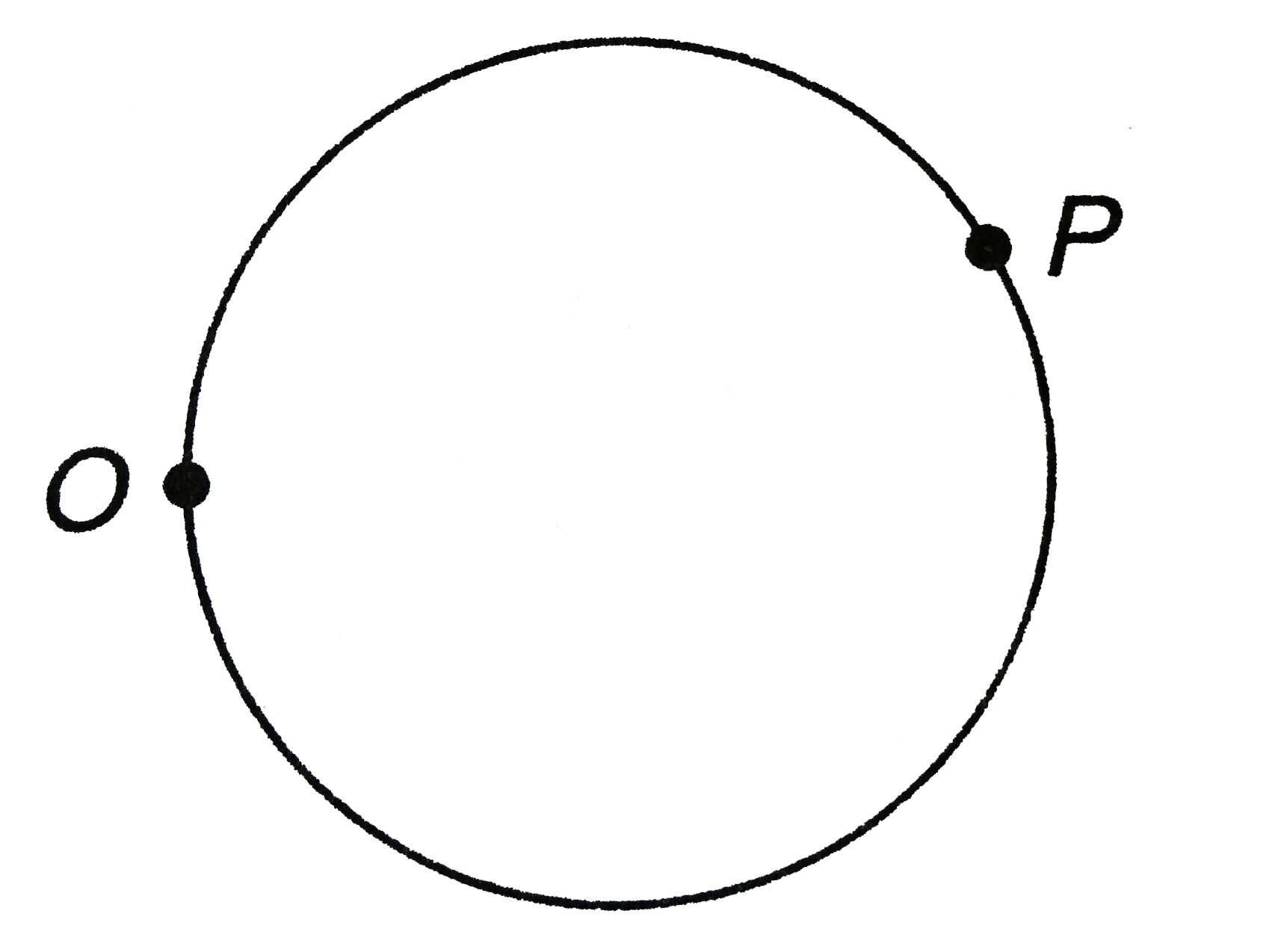If an electron revolves in a circle of radius π/2 cm with uniform speed 6×105m/s. Find the electric current. (Take, π2=10)
To solve the problem of finding the electric current when an electron revolves in a circle, we can follow these steps:
Step 1: Convert the radius from cm to meters
The radius r is given as π2 cm. We need to convert this to meters.
r=π2 cm=π2×10−2 m
Step 2: Identify the speed of the electron
The speed v of the electron is given as 6×105 m/s.
Step 3: Determine the charge of the electron
The charge E of the electron is given as 1.6×10−19 coulombs.
Step 4: Calculate the circumference of the circle
The circumference C of the circle is calculated using the formula:
C=2πr
Substituting the value of r:
C=2π(π2×10−2)=π2×10−2
Given π2=10:
C=10×10−2=10−1 m
Step 5: Calculate the time period T
The time period T is the time taken for one complete revolution, which can be calculated using:
T=CircumferenceSpeed=Cv
Substituting the values:
T=10−16×105=10−16×105=16×106 seconds
Step 6: Calculate the electric current I
The electric current I is given by the formula:
I=ET
Substituting T:
I=E⋅vC
Substituting the values:
I=1.6×10−19⋅6×10510−1
Step 7: Simplify the expression
Calculating the numerator:
1.6×6=9.6
Thus,
I=9.6×10−1410−1=9.6×10−13 A
Final Answer:
The electric current I is 9.6×10−13 amperes.
---
The radius r is given as π2 cm. We need to convert this to meters.
The speed v of the electron is given as 6×105 m/s.
The charge E of the electron is given as 1.6×10−19 coulombs.
The circumference C of the circle is calculated using the formula:
The time period T is the time taken for one complete revolution, which can be calculated using:
The electric current I is given by the formula:
Calculating the numerator:
The electric current I is 9.6×10−13 amperes.
Topper's Solved these Questions
- CURRENT ELECTRICITYBOOK - DC PANDEY ENGLISHCHAPTER - CURRENT ELECTRICITYEXERCISE - Check point
70 Videos
- CURRENT ELECTRICITYBOOK - DC PANDEY ENGLISHCHAPTER - CURRENT ELECTRICITYEXERCISE - Taking it together
142 Videos
- CURRENT ELECTRICITYBOOK - DC PANDEY ENGLISHCHAPTER - CURRENT ELECTRICITYEXERCISE - Level 2 Subjective
13 Videos
- COMMUNICATION SYSTEMBOOK - DC PANDEY ENGLISHCHAPTER - COMMUNICATION SYSTEMEXERCISE - Subjective
11 Videos
- ELECTROMAGNETIC INDUCTIONBOOK - DC PANDEY ENGLISHCHAPTER - ELECTROMAGNETIC INDUCTIONEXERCISE - Medical entrances gallery
25 Videos
Similar Questions
A article moves in a circle of radius 20 cm with linear speed of 10 m/s. Find the angular velocity
View SolutionAn electorn moves in a circle of radius 10cm with a constant speed of 4.0×106ms−1.Find the electric current at a point on the circle.
View SolutionAn electron is moving in a circle of radius 2m with speed 4 m/s . Find the acceleration of the electron
View SolutionIf an electron revolves in the circular path of radius 0.5A∘ at a frequency of 5×1015 cycles/sec. The equivalent electric current is (charge of an electron=1.6x10^-19)
View SolutionIn a hydrogen atom, electron moves in an orbit of radius 5×10−11m with a speed of 2.2×106ms. Calculate the equivalent current.
View SolutionFind the magnitude of the linear acceleration of a particle moving in a circle of radius 10 cm with uniform speed completing the circle in 4s.
View SolutionFind the magnitude of the linear acceleration of a particle moving in a circle of radius 10 cm with uniform speed completing the circle in 4s.
View SolutionImagine that an electron revolves around a circle of the radius 5.3×10−11m with a linear speed of 7.5×104ms−1 in a hydrogen atom. The magnetic field produced at the centre of the circle, due to the electron, is
View SolutionThe electron in a hydrogen atom moves in circular orbit of radius 5×10−11m with a speed of 0.6π×106m/s then
View Solution
Particle P shown in figure is moving in a circle of radius R=10 cm with linear speed v=2m/s Find the angular speed of particle about point O.
View Solution
